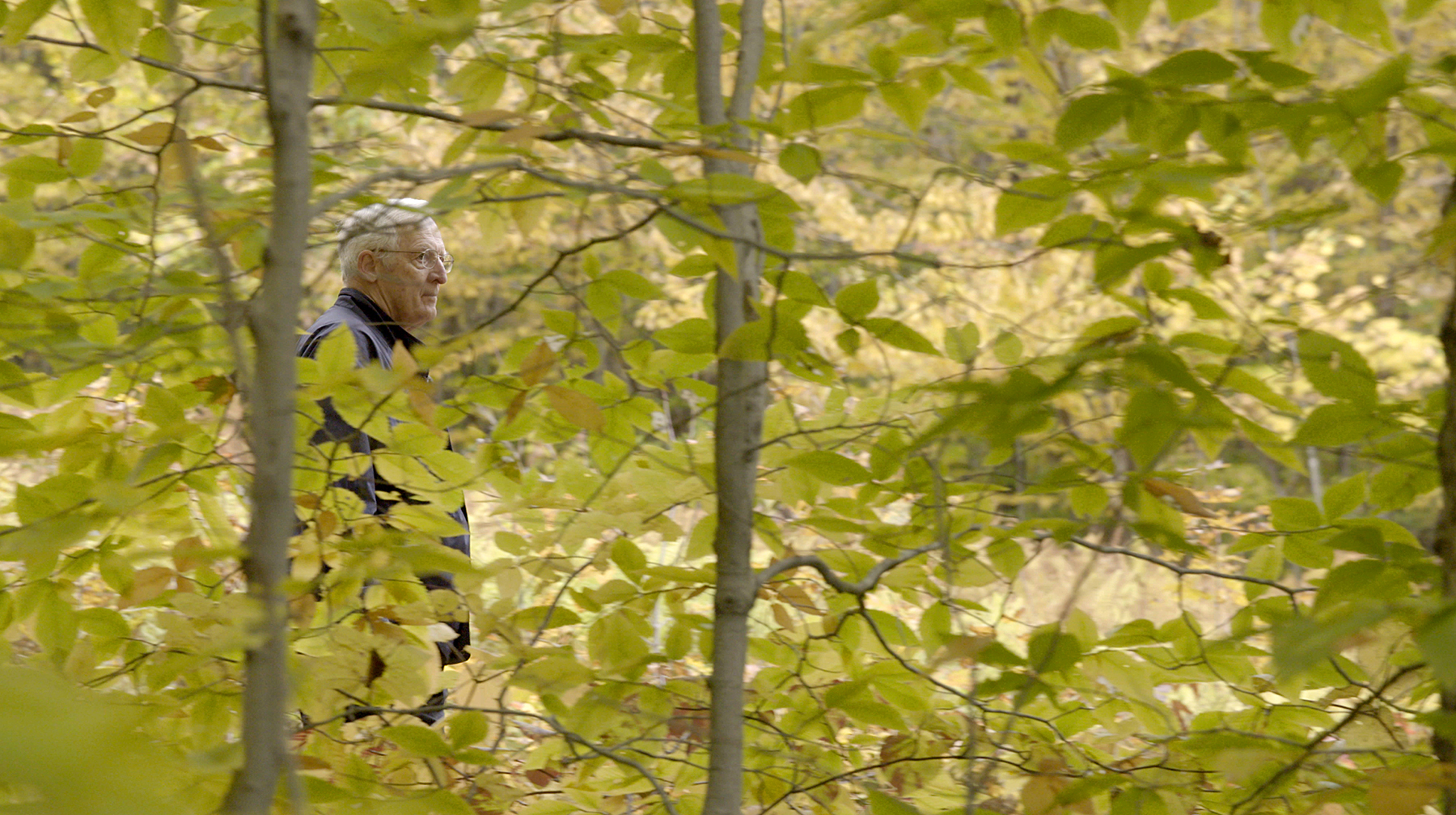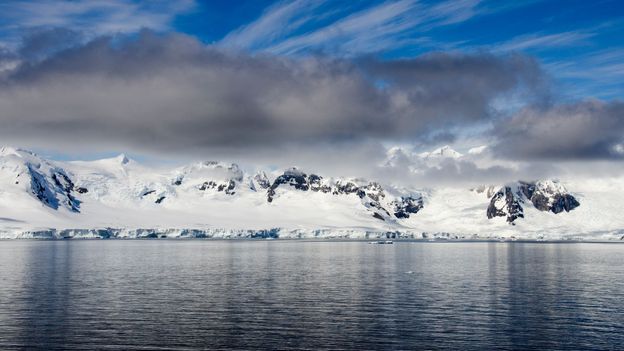ScienceRocks
Democrat all the way!
- Banned
- #21
Thankfully regulations put a stop to most of this! Government does do a lot of good so maybe you should be thankful for once?
Follow along with the video below to see how to install our site as a web app on your home screen.
Note: This feature may not be available in some browsers.
Herp derp yeah that's hilarious! Your link to an opinion blog is proof! It's just a scam! All those fancy scientists and the government that know acid rain is real, those guys are part of a conspiracy!The Acid Rain Scam
Acid rain became an “issue” in 1980 when Congress passed the Acid Deposition Act. After a ten year study, National Acidic Precipitation Assessment Program reported that there wasn’t much of a problem with acid rain. The first report was rejected and Congress went ahead and amended the Clean Air Act to mandate SO2 and NOx emissions. These emissions have been substantially reduced at a cost of several billion dollars per year. Chump change relative to the potential costs of Kyoto/Copenhagen schemes.
According to the EPA the Acid Rain Program has made significant progress…
Air Quality: Emission reductions achieved under the ARP have led to improvements in air quality with significant benefits to human health.
Rainwater was not becoming more acidic prior to the initiation of the EPA’s Acid Rain Program in 1990. The pH of rainwater was actually rising (becoming less acidic) prior to the EPA’s efforts to fight acid rain. The really crazy thing is that the pH has been rising more slowly since the EPA started to fight acid rain!
- Between 1989-1991 and 2006-2008 average ambient sulfate concentrations have decreased by 38 percent in the Mid-Atlantic, 44 percent in the Midwest, 43 percent in the Northeast, and 28 percent in the Southeast.
Rain is supposed to be acidic. The pH of rain in a pristine environment, free from pollution (including volcanoes) is normally about 5.6. Most of the lakes which were showcased as acid rain victims were naturally acidic and had been acidic since well before mankind ever burned his first lump of coal.
Rather than being a global problem, anthropogenic acid rain was a localized problem in parts of Northern Europe which was relatively easily fixed.
The costs of reducing SO2 and NOx emissions haven’t been that awful… And the reductions did lead to some beneficial incremental environmental effects… But… No acid rain crisis ever existed.
The Acid Rain Scam



I've been going to the Adirondacks since I was a little kid and have seen first hand the improvement. The amount of dying trees has lessened considerably especially around small ponds that became acidic. Unfortunately native trout died out in a lot of lakes and ponds but they are stocking some ponds and lakes successfully now that the ph has lowered.Thankfully regulations put a stop to most of this! Government does do a lot of good so maybe you should be thankful for once?
I've been going to the Adirondacks since I was a little kid and have seen first hand the improvement. The amount of dying trees has lessened considerably especially around small ponds that became acidic. Unfortunately native trout died out in a lot of lakes and ponds but they are stocking some ponds and lakes successfully now that the ph has lowered.Thankfully regulations put a stop to most of this! Government does do a lot of good so maybe you should be thankful for once?
And I'm not some far lefty environmental dude either, those types would ban snowmobiling in the park which I am against. The state has done a very good job expanding "forever wild" areas where only hiking is allowed while improving areas for snowmobiling and other tourism. They are giving out fines for obnoxious loud pipes on sleds. This is how it should be, compromises so most taxpayers get what they want and the park is preserved.

So acid rain is real, and some overstated the impact. Thanks for agreeing.I've been going to the Adirondacks since I was a little kid and have seen first hand the improvement. The amount of dying trees has lessened considerably especially around small ponds that became acidic. Unfortunately native trout died out in a lot of lakes and ponds but they are stocking some ponds and lakes successfully now that the ph has lowered.Thankfully regulations put a stop to most of this! Government does do a lot of good so maybe you should be thankful for once?
And I'm not some far lefty environmental dude either, those types would ban snowmobiling in the park which I am against. The state has done a very good job expanding "forever wild" areas where only hiking is allowed while improving areas for snowmobiling and other tourism. They are giving out fines for obnoxious loud pipes on sleds. This is how it should be, compromises so most taxpayers get what they want and the park is preserved.
So you are simply ignoring the facts I presented. Just ignoring those facts? Yeah that it is what you are doing.
------------------------------------------
Months after the regulations were voted into law, 60 Minutes became the first MSM outlet to look into the allegations that acid rain science was a hoax. “(NAPAP chief scientist Ed) Krug and then-NAPAP director James Mahoney explained and defended the project’s conclusions,” reported Reason. “Both argued that acid rain is not a crisis. On acid lakes, (60 Minutes reporter) Kroft repeated NAPAP’s belief that acid rain contributes to acidity of only ‘about 2 percent of the surface water in the Adirondacks.’” Asked about a New York Times story that claimed acid rain had turned forests in Appalachia into “ragged landscapes of dead and dying trees,” Krug told 60 Minutes, “I don’t know where they got that from. It appears to be another assertion, unsubstantiated.”
Read more at: As with the Truth about Acid Rain, the MSM Wants to Bury Climaquiddick
The conclusions of this $500 million study inspired by Senator Daniel Patrick Moynihan were ignored by most of the news media when they were released in 1990 because they ran counter to the claims by environmentalists that acid rain was destroying forests, lakes and streams in the Northeast.
The result was that Congress, which commissioned the 10-year study, included in the Clean Air Act of 1990 needless requirements to combat acid rain that were estimated to cost electric power consumers about $5 billion a year.
Teach Acid-Rain Facts, Not Fears and Fiction

The reports by and large were false.So acid rain is real, and some overstated the impact. Thanks for agreeing.I've been going to the Adirondacks since I was a little kid and have seen first hand the improvement. The amount of dying trees has lessened considerably especially around small ponds that became acidic. Unfortunately native trout died out in a lot of lakes and ponds but they are stocking some ponds and lakes successfully now that the ph has lowered.Thankfully regulations put a stop to most of this! Government does do a lot of good so maybe you should be thankful for once?
And I'm not some far lefty environmental dude either, those types would ban snowmobiling in the park which I am against. The state has done a very good job expanding "forever wild" areas where only hiking is allowed while improving areas for snowmobiling and other tourism. They are giving out fines for obnoxious loud pipes on sleds. This is how it should be, compromises so most taxpayers get what they want and the park is preserved.
So you are simply ignoring the facts I presented. Just ignoring those facts? Yeah that it is what you are doing.
------------------------------------------
Months after the regulations were voted into law, 60 Minutes became the first MSM outlet to look into the allegations that acid rain science was a hoax. “(NAPAP chief scientist Ed) Krug and then-NAPAP director James Mahoney explained and defended the project’s conclusions,” reported Reason. “Both argued that acid rain is not a crisis. On acid lakes, (60 Minutes reporter) Kroft repeated NAPAP’s belief that acid rain contributes to acidity of only ‘about 2 percent of the surface water in the Adirondacks.’” Asked about a New York Times story that claimed acid rain had turned forests in Appalachia into “ragged landscapes of dead and dying trees,” Krug told 60 Minutes, “I don’t know where they got that from. It appears to be another assertion, unsubstantiated.”
Read more at: As with the Truth about Acid Rain, the MSM Wants to Bury Climaquiddick
The conclusions of this $500 million study inspired by Senator Daniel Patrick Moynihan were ignored by most of the news media when they were released in 1990 because they ran counter to the claims by environmentalists that acid rain was destroying forests, lakes and streams in the Northeast.
The result was that Congress, which commissioned the 10-year study, included in the Clean Air Act of 1990 needless requirements to combat acid rain that were estimated to cost electric power consumers about $5 billion a year.
Teach Acid-Rain Facts, Not Fears and Fiction

No, it was reported by the NY Times.Owl, your evidence that Acid Rain was a hoax consists of nothing but right wing, pro-industry opinion pieces and blogs. Let's see links to some peer reviewed studies supporting your claims. Like these from Wikipedia's article (which says you are FULL of shit)
Close
- ^ Likens, Gene E.; Keene, William C.; Miller, John M.; Galloway, James N. (1987). "Chemistry of precipitation from a remote, terrestrial site in Australia". Journal of Geophysical Research 92: 13299.doi:10.1029/JD092iD11p13299.
- ^ E. S. de Beer, ed. The Diary of John Evelyn, III, 1955 (19 September 1667) p. 495.
- ^ a b Glossary, United States: NASA Earth Observatory, acid rain, archived from the original on 2011-12-13, retrieved 2013-02-15
- ^ Weathers, K. C. and Likens, G. E. (2006). "Acid rain", pp. 1549–1561 in: W. N. Rom and S. Markowitz (eds.). Environmental and Occupational Medicine. Lippincott-Raven Publ., Philadelphia. Fourth Edition, ISBN 0-7817-6299-5.
- ^ a b c Seinfeld, John H.; Pandis, Spyros N (1998). Atmospheric Chemistry and Physics — From Air Pollution to Climate Change. John Wiley and Sons, Inc. ISBN 978-0-471-17816-3
- ^ Likens, G. E., Bormann, F. H. and Johnson, N. M. (1972). "Acid rain".Environment 14 (2): 33–40.doi:10.1080/00139157.1972.9933001.
- ^ Acid Rain in New England, A Brief History. Epa.gov. Retrieved on 2013-02-09.
- ^ Likens, G. E. and Bormann, F. H. (1974). "Acid Rain: A Serious Regional Environmental Problem". Science 184 (4142): 1176–9.doi:10.1126/science.184.4142.1176.PMID 17756304.
- ^ Keller, C. K.; White, T. M.; O'Brien, R.; Smith, J. L. (2006). "Soil CO2 dynamics and fluxes as affected by tree harvest in an experimental sand ecosystem". Journal of Geophysical Research 111.doi:10.1029/2005JG000157.
- ^ Galloway, JN; Dianwu, Z; Jiling, X; Likens, GE (1987). "Acid rain: China, United States, and a remote area". Science 236(4808): 1559–62.doi:10.1126/science.236.4808.1559.PMID 17835740.
- ^ Chandru (2006-09-09). "CHINA: Industrialization pollutes its country side with Acid Rain". Southasiaanalysis.org. Archived from the original on 21 April 2010. Retrieved 2010-11-18.
- ^ Lefohn, A.S.; Husar, J.D.; Husar, R.B. (1999), Global Sulfur Emissions Database, United States: A.S.L. & Associates
- ^ a b Likens, G. E., Wright, R. F.; Galloway, J. N. and Butler, T. J. (1979). "Acid rain".Scientific American 241 (4): 43–51.doi:10.1038/scientificamerican1079-43.
- ^ Likens, G. E. (1984). "Acid rain: the smokestack is the "smoking gun"". Garden 8(4): 12–18.
- ^ "Art Under Wraps", Harvard Magazine, March–April 2000
- ^ a b Lackey, R.T. (1997). "Science, policy, and acid rain: lessons learned" (PDF).Renewable Resources Journal 15 (1): 9–13.
- ^ Winstanley, Derek; Lackey, Robert T.; Warnick, Walter L.; Malanchuk, John (1998). "Acid rain: Science and policy making".Environmental Science & Policy 1: 51.doi:10.1016/S1462-9011(98)00006-9.
- ^ "US EPA: A Brief History of Acid Rain". Epa.gov. Retrieved 2010-11-18.
- ^ a b 'Cap-and-trade' model eyed for cutting greenhouse gases, San Francisco Chronicle, December 3, 2007.
- ^ "Facts On File News Services Databases". 2facts.com. Retrieved2010-11-18.
- ^ Gilberston, T. and Reyes, O. 2009.Carbon Trading: how it works and why it fails. Dag Hammerskjold Foundation: 22
- ^ Acid Rain Program 2007 Progress Report, United States Environmental Protection Agency, January 2009.
- ^ Gerdes, Justin. "Cap and Trade Curbed Acid Rain: 7 Reasons Why It Can Do The Same For Climate Change". Forbes. Forbes. Retrieved 27 Oct 2014.
- ^ Berresheim, H.; Wine, P.H. and Davies D.D. (1995). "Sulfur in the Atmosphere". InComposition, Chemistry and Climate of the Atmosphere, ed. H.B. Singh. Van Nostrand Rheingold ISBN 0-442-01264-0
- ^ Clean Air Act Reduces Acid Rain In Eastern United States, ScienceDaily, September 28, 1998
- ^ "UK National Air Quality Archive: Air Pollution Glossary". Airquality.co.uk. 2002-04-01. Retrieved 2010-11-18.
- ^ a b US EPA: Effects of Acid Rain – Surface Waters and Aquatic Animals
- ^ Rodhe, H., et al. The global distribution of acidifying wet deposition. Environmental Science and TEchnology. vlo. 36, no. 20 (October) p. 4382–8
- ^ US EPA: Effects of Acid Rain – Forests
- ^ Likens, G.E.; Driscoll, C.T.; Buso, D.C.; Mitchell, M.J.; Lovett, G.M.; Bailey, S.W.; Siccama, T.G.; Reiners, W.A.; Alewell, C. (2002). "The biogeochemistry of sulfur at Hubbard Brook" (PDF). Biogeochemistry 60(3): 235. doi:10.1023/A:1020972100496.
- ^ Likens, G. E.; Driscoll, C. T.; Buso, D. C. (1996). "Long-Term Effects of Acid Rain: Response and Recovery of a Forest Ecosystem" (PDF). Science 272 (5259): 244. doi:10.1126/science.272.5259.244.
- ^ DeHayes, D.H., Schaberg, P.G. and G.R. Strimbeck. (2001). Red Spruce Hardiness and Freezing Injury Susceptibility. In: F. Bigras, ed. Conifer Cold Hardiness. Kluwer Academic Publishers, the Netherlands ISBN 0-7923-6636-0.
- ^ Lazarus, Brynne E.; Schaberg, Paul G.; Hawley, Gary J.; DeHayes, Donald H. (2006)."Landscape-scale spatial patterns of winter injury to red spruce foliage in a year of heavy region-wide injury" (PDF). Can. J. For. Res.36: 142–152. doi:10.1139/x05-236.highbeam copy
- ^ Effects of Acid Rain – Human Health. Epa.gov (2006-06-02). Retrieved on 2013-02-09.
- ^ "ICP on effects on materials". Springerlink.com. Retrieved 2010-11-18.
- ^ "Approaches in modeling the impact of air pollution-induced material degradation"(PDF). Retrieved 2010-11-18.
- ^ Ed. Hatier (1993). "Acid Rain in Europe". United Nations Environment Programme GRID Arendal. Retrieved2010-01-31.
- ^ US Environmental Protection Agency (2008). "Clean Air Markets 2008 Highlights". Retrieved 2010-01-31.
- ^ Clean Air Act Amendments of 1990, 42U.S. Code 7651
External linksNational Acid Precipitation Assessment Program Report – a 98-page report to Congress (2005)
- United States Environmental Protection Agency – New England Acid Rain Program(superficial)
- Acid Rain (more depth than ref. above)
- U.S. Geological Survey – What is acid rain?
- Acid Rain: A Continuing National Tragedy– a report from The Adirondack Council on acid rain in the Adirondack region (1998)

I have seen this difference in my lifetime regarding the Adirondacks. Of course anyone can say anything on the internet so no one has to believe me. I'm just glad my favorite place on Earth has improved, and hopefully ph goes down in more lake/ ponds so they can continue reintroducing trout.What happened?
A sulfur pollution cap-and-trade program was implemented.
Deniers declared it would DOOM the economy.
Instead, it was fantastically successful, and the problem was solved.
So, scientists were proven to be 100% correct, deniers were proven to be 100% wrong. You know, same as usual. And to deflect from their complete humiliating failure, certain deniers are invoking conspiracy theories. Again, same as usual.
The left don't have thumbs.LOL....the sad thing is the left loons won't grasp it

Like the Ozone hole hoax.The left wing sucker fishes have taken the lies hook line and sinker... Then the Democrats attach massive taxation to it and then real in the money from them... As always, its a scam to get money without using a gun to take it.
Easily shown to be a scam, and then they scream 'but we have consensus' from paid shills.. predictable left wing retards..
How acid rain was mostly solved:Like the Ozone hole hoax.


badda bing badda boom. Can't make it up. You have absolutely, nothing to prove either. Zero. just because some demofk outlet says so doesn't make it real. The most evil pricks on the planet causing harm to innocence in the globe. You're cultured look at things merely means you buy into bullshit.How acid rain was mostly solved:

And, in a similar manner, how the ozone hole was mostly solved

What happened to the world's ozone hole?
Back in the 1990s, the hole in the planet's ozone layer was a pressing global crisis – if we had ignored it, today there would be several.www.bbc.com
I need to show that your claims that ozone depletion and acid rain are hoaxes is utter nonsense. I bet you spend your time off this forum arguing that drunk driving, cigarettes, cocaine and heroin are all good for you.badda bing badda boom. Can't make it up. You have absolutely, nothing to prove either. Zero. just because some demofk outlet says so doesn't make it real.
From where I stand, that would be you.The most evil pricks on the planet causing harm to innocence in the globe.
Cultured look? I spent maybe 30 seconds doing a google search.You're cultured look at things merely means you buy into bullshit.
BTW, the science says there's a hole in the ozone every year above Antarctica. Every year, it's still there when the sun shines fully on the region. Look it up. I dare you.
Yep the hole above the Arctic is repaired itself, just like it does during summer. The Antarctic hole has not grown larger and is at the same size it was since recordkeeping began.Like the Ozone hole hoax.
/https%3A%2F%2Ftf-cmsv2-smithsonianmag-media.s3.amazonaws.com%2Ffiler_public%2F07%2Fdd%2F07ddf125-cbe3-4d1b-857c-332ab0a90408%2F387011main_ozonehole20090910_540.jpeg)
WIKI?????I need to show that your claims that ozone depletion and acid rain are hoaxes is utter nonsense. I bet you spend your time off this forum arguing that drunk driving, cigarettes, cocaine and heroin are all good for you.
From where I stand, that would be you.
Cultured look? I spent maybe 30 seconds doing a google search.
Ozone depletion
From Wikipedia, the free encyclopedia
Ozone depletion consists of two related events observed since the late 1970s: a steady lowering of about four percent in the total amount of ozone in Earth's atmosphere, and a much larger springtime decrease in stratospheric ozone (the ozone layer) around Earth's polar regions.[1] The latter phenomenon is referred to as the ozone hole. There are also springtime polar tropospheric ozone depletion events in addition to these stratospheric events.
The main causes of ozone depletion and the ozone hole are manufactured chemicals, especially manufactured halocarbon refrigerants, solvents, propellants, and foam-blowing agents (chlorofluorocarbons (CFCs), HCFCs, halons), referred to as ozone-depleting substances (ODS).[2] These compounds are transported into the stratosphere by turbulent mixing after being emitted from the surface, mixing much faster than the molecules can settle.[3] Once in the stratosphere, they release atoms from the halogen group through photodissociation, which catalyze the breakdown of ozone (O3) into oxygen (O2).[4] Both types of ozone depletion were observed to increase as emissions of halocarbons increased.
Ozone depletion and the ozone hole have generated worldwide concern over increased cancer risks and other negative effects. The ozone layer prevents harmful wavelengths of ultraviolet (UVB) light from passing through the Earth's atmosphere. These wavelengths cause skin cancer, sunburn, permanent blindness, and cataracts,[5] which were projected to increase dramatically as a result of thinning ozone, as well as harming plants and animals. These concerns led to the adoption of the Montreal Protocol in 1987, which bans the production of CFCs, halons, and other ozone-depleting chemicals.[6] Currently, scientists plan to develop new refrigerants to replace older ones.[7]
The ban came into effect in 1989. Ozone levels stabilized by the mid-1990s and began to recover in the 2000s, as the shifting of the jet stream in the southern hemisphere towards the south pole has stopped and might even be reversing.[8] Recovery is projected to continue over the next century, and the ozone hole is expected to reach pre-1980 levels by around 2075.[9] In 2019, NASA reported that the ozone hole was the smallest ever since it was first discovered in 1982.[10][11]
The Montreal Protocol is considered the most successful international environmental agreement to date.[12][13] Following the bans on ozone-depleting chemicals, the UN projects that under the current regulations the ozone layer will completely regenerate by 2045.[14]
Ozone cycle overview
Three forms (or allotropes) of oxygen are involved in the ozone-oxygen cycle: oxygen atoms (O or atomic oxygen), oxygen gas (O2 or diatomic oxygen), and ozone gas (O3 or triatomic oxygen).[15] Ozone is formed in the stratosphere when oxygen gas molecules photodissociate after absorbing UVC photons. This converts a single O2 into two atomic oxygen radicals. The atomic oxygen radicals then combine with separate O2 molecules to create two O3 molecules. These ozone molecules absorb UVB light, following which ozone splits into a molecule of O2 and an oxygen atom. The oxygen atom then joins up with an oxygen molecule to regenerate ozone. This is a continuing process that terminates when an oxygen atom recombines with an ozone molecule to make two O2 molecules. It is worth noting that ozone is the only atmospheric gas that absorbs UVB light.
O + O3 → 2 O2
Levels of ozone at various altitudes (DU/km) and blocking of different bands of ultraviolet radiation: In essence, all UVC is blocked by diatomic oxygen (100–200 nm) or by ozone (triatomic oxygen) (200–280 nm) in the atmosphere. The ozone layer then blocks most UVB. Meanwhile, UVA is hardly affected by ozone, and most of it reaches the ground. UVA makes up almost all UV light that penetrates the Earth's atmosphere.
The total amount of ozone in the stratosphere is determined by a balance between photochemical production and recombination.
Ozone can be destroyed by a number of free radical catalysts; the most important are the hydroxyl radical (OH·), nitric oxide radical (NO·), chlorine radical (Cl·) and bromine radical (Br·). The dot is a notation to indicate that each species has an unpaired electron and is thus extremely reactive. All of these have both natural and man-made sources; at present, most of the OH· and NO· in the stratosphere is naturally occurring, but human activity has drastically increased the levels of chlorine and bromine.[16] These elements are found in stable organic compounds, especially chlorofluorocarbons, which can travel to the stratosphere without being destroyed in the troposphere due to their low reactivity. Once in the stratosphere, the Cl and Br atoms are released from the parent compounds by the action of ultraviolet light.




